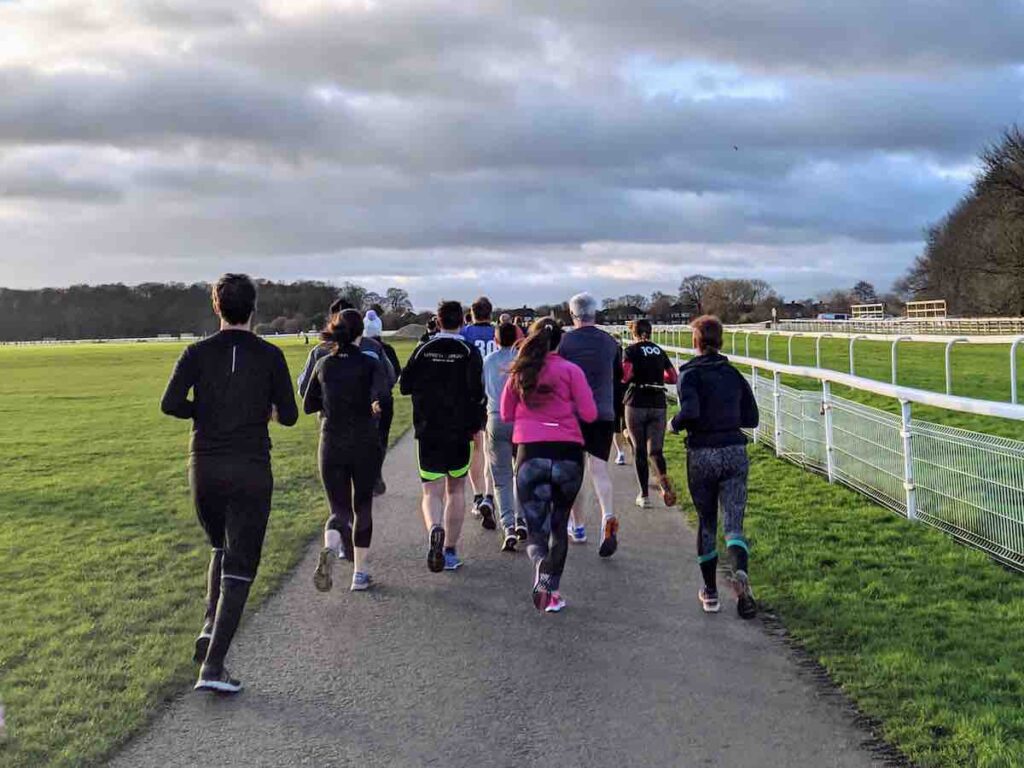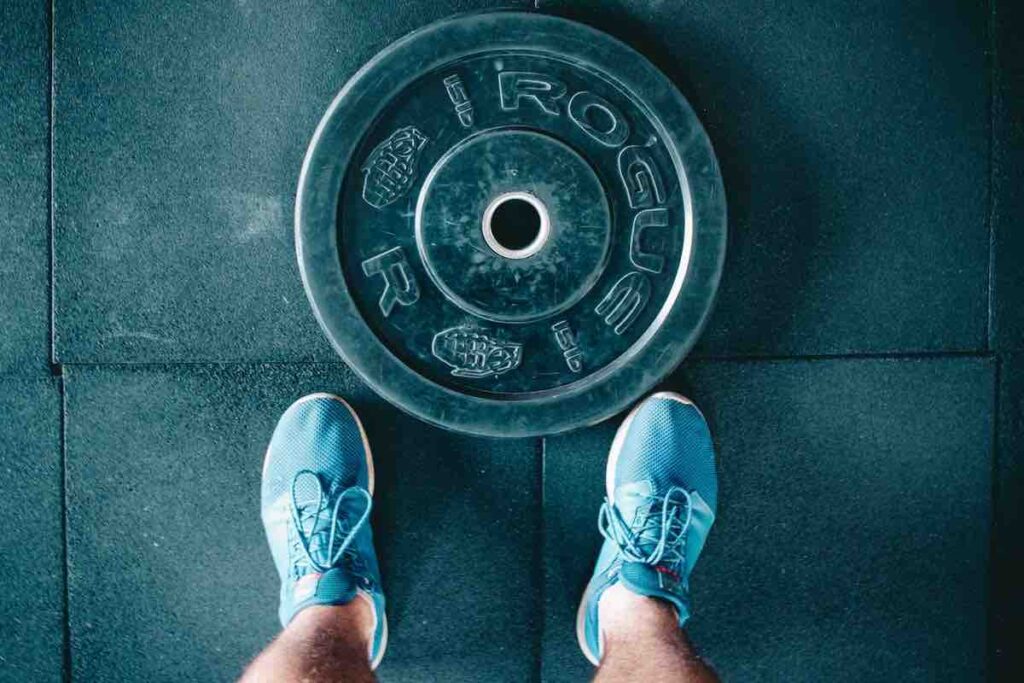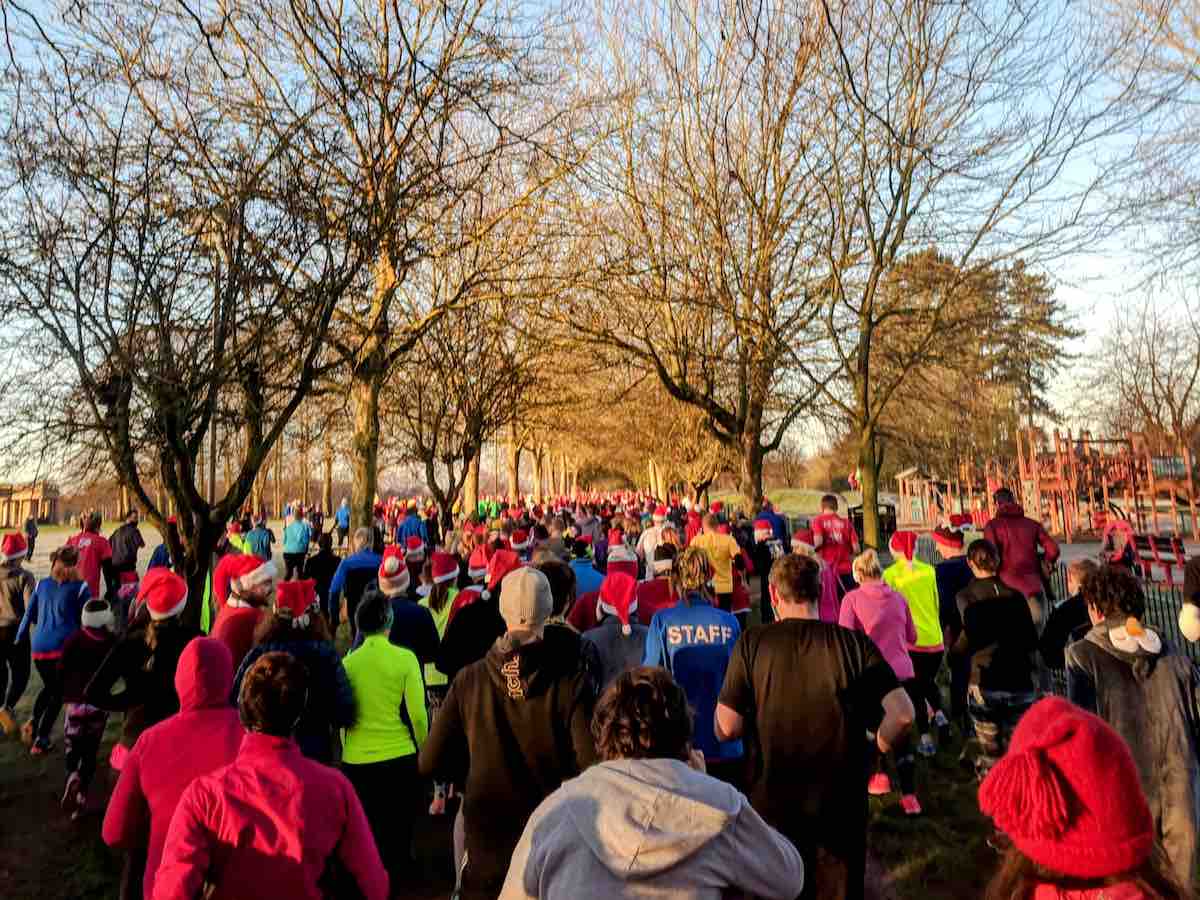Jogging burns. Jogging boosts. Jogging strengthens. An excellent all-rounder, a regular jogging routine can work wonders for your body and brain health.
The potential benefits can be unlocked the moment your physical activity hits a pace and intensity that pushes the demands on your heart, lungs, and muscles.
So, whether you’re working up from a fast walk or winding down on a rigorous running program, get ready to enjoy the many health benefits of jogging.
The Main Health Benefits of Jogging:
- Improve cardiovascular health and increase blood flow
- Improve stamina and endurance
- Easier and more efficient breathing
- Lower-body muscle growth
- Improve memory and focus
- Burn calories and achieve weight loss goals
- Strengthen bone mass and density
- Boost your immune system
- Aids faster recovery
- Transform your mental health
- Helps you to live longer
Let’s take a deeper look…
In full: What Does Jogging Do To Your Body?
#1: A Good Jogging Routine Improves Heart Health
Each day, your heart beats around 100,000 times. Look after your body’s unsung hero and you’ll live a longer and fuller life.
The cardiovascular benefits of physical exercise are well known, particularly if starting running in your 40s or later. Keeping fit aids blood pressure control, improves the blood lipid profile (that is, lowers cholesterol), and boosts blood flow. As your Apple Watch will testify, runners enjoy a lower resting heart rate and better cardiovascular endurance, meaning the heart muscle becomes stronger and better delivers oxygen and nutrients to all parts of your body. This helps your organs and muscles to work properly, which in turns benefits your running.
Need more proof? Research published in the British Journal of Sports Medicine found that runners had a 30% lower risk of early death from both heart disease and circulatory conditions and a 27% lower risk of early death from any cause.
#2: Jogging Builds Stamina and Endurance
Remember the tortoise and the hare? Jogging at a slow and steady pace prepares the body for more intense exercises.
This is felt on two fronts: stamina and endurance. Both terms are often used interchangeably, so what’s the difference?
While stamina is the amount of time you can run at peak capacity, endurance is the maximum time you can continue running. So, while stamina fuels sprints, endurance powers you over longer distances.
Jogging helps with both cardiovascular endurance (as mentioned above) and muscular endurance. The latter is ability of your leg muscles to carry you further without giving up on you.
#3: Runners Breath More More Efficiently
When you run, your muscles and cells depend on the constant delivery of oxygen and expulsion of carbon dioxide to propel movement. Good breathing also ensures proper muscular function of the diaphragm, which is key for stabilizing your core for better running form, and regulating your nervous system for staying cool under pressure.
Performing deliberate breathing exercises while jogging can help you to breath more easily and efficiently. Doing so through your nose even more so.
A recent study by scientists at Colorado State University Pueblo found that runners who breathe through their nose can increase both their speed and distance. An increase in ventilatory efficiency (easier, more stable breathing) is caused by improved recruitment of your diaphragm and a deeper penetration of oxygen into your lungs.
Mastering nasal breathing can take between 1-6 months, depending on factors such as your tolerance of carbon dioxide and breaking through the initial discomfort associated with nasal breathing.
#4: Running Strengthens Your Leg Muscles

Your upper body muscles might not get much of a workout but your lower body will thank you. This is because jogging enlists so many leg muscles for speed and good technique.
Form follows function when you run more often.
The gastrocnemius and soleus, power the calves and are responsible for lifting the heel and pushing you forward. Meanwhile, the quads and gluteal muscles act as an anchor for your pelvis to stabilize movement, particularly during the float phase when both feet are off the ground.
The quadriceps (or thigh muscle) dictate your stride and ability to run uphill, while your hamstrings are responsible for force production in the push-off phases. Running also works core muscles like the obliques and rectus abdominis, to help stabilize the lumbar spine and reduce compressive forces in the spine.
Jogging or running daily over long periods does put strain on these muscles, so to prevent injury it’s important to strengthen and stretch them before and after every outing.
#5: Jogging Promotes Healthy Brain Function

Jogging isn’t just good for your body – it boosts brain health, too.
A slow jogging pace and moderate aerobic exercises are trusted allies in fighting mental fatigue. Researchers found that a slow pace and steady aerobic exercise can boost neuroplasticity and protect against degeneration of neurons in the brain, which causes symptoms such as memory loss, moodiness, anxiety, depression, and agitation.
The onset of positive effects on the brain from aerobic exercise is rapid and is increasingly being prescribed by medical professionals to prevent, delay, or treat cognitive decline.
So, whilst you might be jogging to boost your general fitness, it’s also a great source of brainfood.
#6: Lose Weight and Body Fat by Jogging
Running is an insanely efficient calorie burner.
One 30 minute jog kick-starts your metabolism and burns between 200-500 calories. Excuse the running pun, but that’s a huge step forwards to any weight loss goal. Despite the fact the exercise is mostly cardio, the body’s muscles, especially those on the abs, can become stronger as they are toned by exercise.
What’s more, a jog will increase your resting metabolism for the rest of the day. A workout that keeps working for you.
Coupled with a healthy and balanced diet, jogging can work like a dream for positive overall weight management.
#7: Running Builds Muscular and Bone Strength

Like muscle, bone is living tissue that responds to exercise by becoming stronger.
This can be achieved via weight-bearing and resistance exercises.
Let’s tackle each of those in turn…
Weight-bearing exercises force you to work against gravity. Think running in the city, jogging, and dancing, although to a lower extent lower-intensity workouts, such as brisk walking or yoga. The muscles and tendons apply tension to the bones, which stimulates the bones to produce more bone tissue. As a result, bones become stronger and more dense and better prevent injuries.
Resistance exercises, such as leg day at the gym, increase bone mass and density in a slightly different way. This is because a variety of muscular loads are applied on the bone, which spark osteogenic cells into action, accelerating bone repair and growth.
#8: Jogging Strengthens Your Immune System
There’s a myth that physical activities wear you down and make you more susceptible to getting ill, but that’s not true of moderate exercise.
Frequent exercise (1-5 days per week) actually strengthens your body’s response to illnesses and viral infections, according to research published in the journal Frontiers in Immunology. Another study in the British Medical Journal found jogging helps to reduce the risk of cold and other respiratory infections by up to 50%. Upper respiratory symptoms were also 32-41% less severe among those who engaged in frequent exercise compared to those who rarely exercised.
The optimal workout session for immune-boosting benefits is said to be 60 minutes or less. Momentum is important too. Undertaking moderate exercise daily, your immune and metabolic systems grows, building on previous gains before they’re lost.
So, start jogging and let the many health benefits roll in!
#9: A Recovery Run Can Get You Back on Track
We all crave rest after half-marathon or marathon, but light exercise a day or two after is what’s really called for.
By getting the blood flowing to your muscles again, you can speed up your recovery, when muscles can experience delayed onset muscle soreness (or DOMS). This counterintuitive trick works by promoting the circulation of oxygen-rich blood to the fatigued muscles, therefore reducing recovery time and soreness. All it takes is a gentle jog at 30-60% of your maximum heart rate to get things going.
Other active recovery activities include walking, swimming, cycling, yoga or light stretches.
#10: Runner’s High Can Transform Mental Health
Physical activity is not only great for your body, it’s kind on your mind.
Regularly putting on your running shoes and opting to immerse yourself in nature takes you to an otherwise unreachable place of happiness. Awe Runs reduce stress, depression and anxiety, help you to get more fresh air, and work through life’s curveballs faster than ever.
Speaking from personal experience, a morning run never fails to lift my mood. Master the art of showing up consistently and it can change your whole outlook.
And the emotional boost can all start with a single 10-minute run, according to this new research.
#11: Jogging Helps You Live Longer
It’s official: a sporty lifestyle can also add up to 10 years to your life.
The Copenhagen City Heart Study (CCHS) measured the varying improvements in life expectancy associated with participation in various sports.
The 8577 participants were followed for up to 25 years or until they passed away, with all sports tracked seemingly helping you to live longer. Jogging giving you an extra 3 years, although sporting activities that were more social reported even better results – another reason to join a local running club or head to parkrun every Saturday!
The breakdown:
- badminton 6.2 years
- soccer 4.7 years
- cycling 3.7 years
- swimming 3.4 years
- jogging 3.2 years
- calisthenics 3.1 years
- gym? 1.5 years
So, in summary, jogging makes you healthier, happier, smarter and prepares your body to take your running to new heights.

